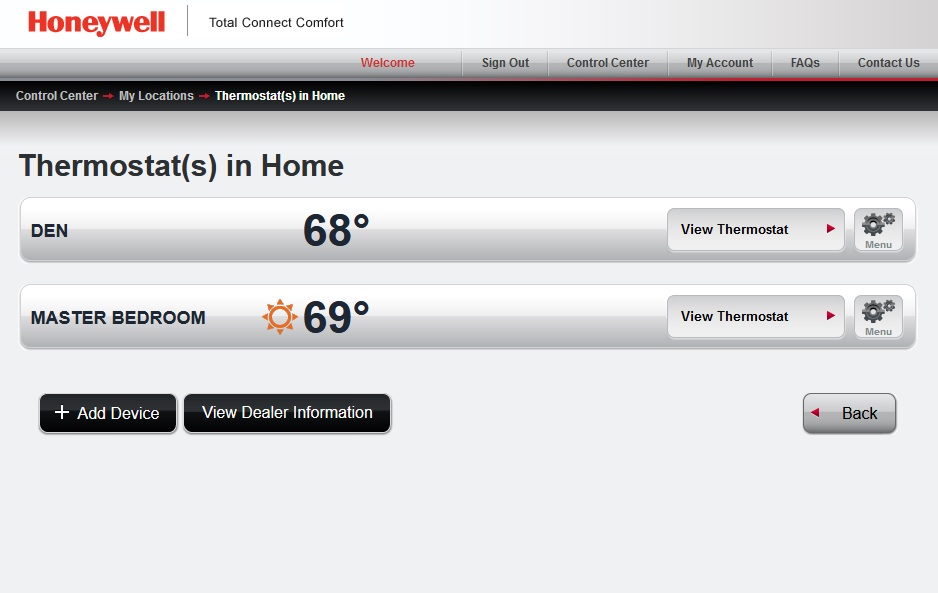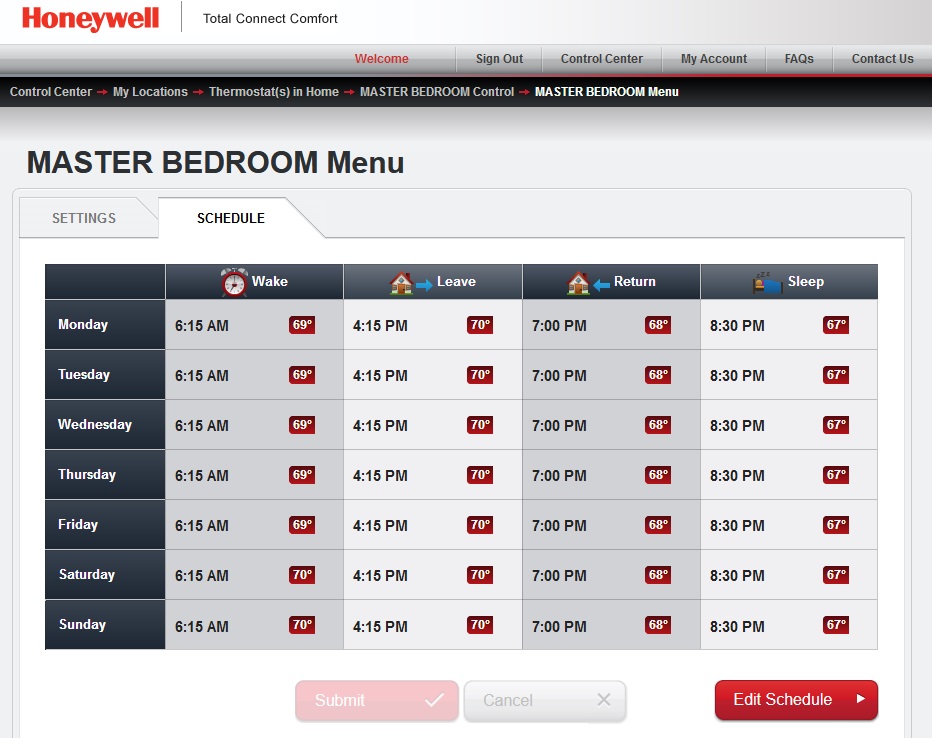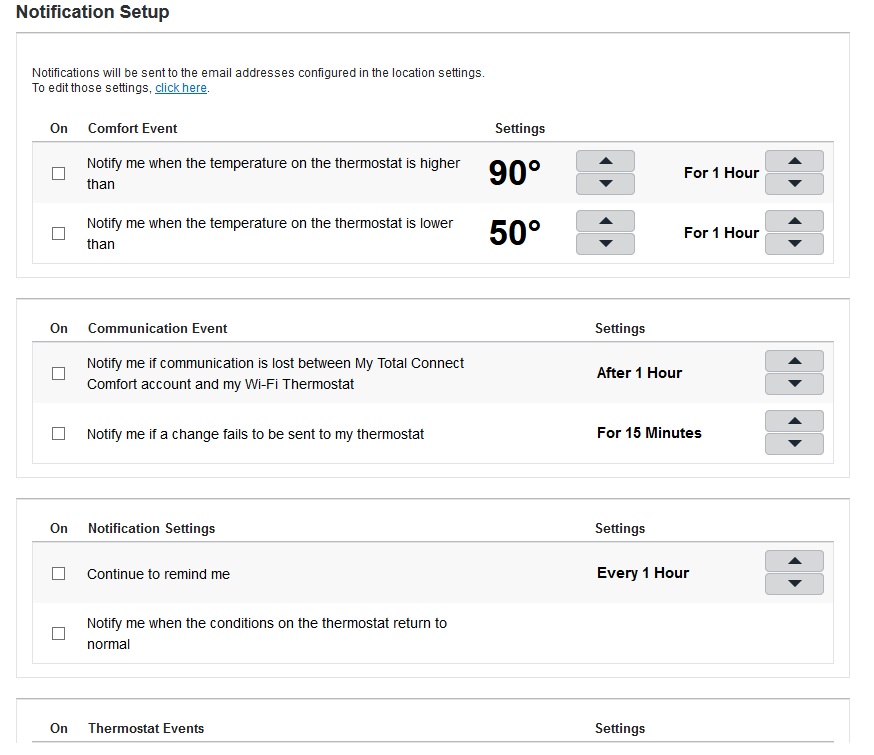Welcome! Here are the website rules, as well as some tips for using this forum.
Need to contact us? Visit https://heatinghelp.com/contact-us/.
Click here to Find a Contractor in your area.
If our community has helped you, please consider making a contribution to support this website. Thanks!
Hanging hydronic modine heater in attached 2 car garage
Options
clydesdale
Member Posts: 78
in Oil Heating
I bought a 45,000 btu Modine hydronic heater to add to my oil heated house. The house uses two forced air systems. One is in the basement and one is in the attic. The system has glycol because the air handler in the attic sees cold temps and I live in NY.
The plan is to run 3/4 pex from the basement into the new heater in the garage. Can someone help explain how this should be plumbed? I had been suggested to use a well and submersible aquastat and someone else suggested a strap on aquastat.
Any suggestions on how to do this best? Thanks.
The plan is to run 3/4 pex from the basement into the new heater in the garage. Can someone help explain how this should be plumbed? I had been suggested to use a well and submersible aquastat and someone else suggested a strap on aquastat.
Any suggestions on how to do this best? Thanks.
0
Comments
-
More info is needed. Some good pics of your boiler and its near piping would be helpful to determine the best approach.
Also: make sure that you use O2 barrier pex, not the common plumbing variety.Bob Boan
You can choose to do what you want, but you cannot choose the consequences.0 -
Usually the heater is zoned off the boiler and the fan runs off an aquastat (strap, snap disk or well). The unit would be energized all the time but the fan would not turn on until the unit sees hot water.
More info needed for a complete answer."If you can't explain it simply, you don't understand it well enough"
Albert Einstein0 -
I will be getting you guys pictures soon. Computer crashed and new parts will be here soon. I have a slightly new issue also. It turns out that the fan on my Modine Hot Dawg is slamming against the housing. This is a brand new never plumbed heater. So, I am working on that with supplyhouse.com.
My plan is to run 3/4 pex from the boiler in the basement and then use copper as I have to make a sharp 90 around a little out corner wall in the garage. One question that I have is, do I need to use copper to make that 90 or is there a 90 pex that will work just as fine? Any advantage to using the copper or just stick with pex? The other question is that my boiler guy wants to use a submersible aquastat. Do I need to put that in copper or do they make a pex well? How far away from the unit should the well be? Thanks.0 -
Another aquastat question- what are the pros and cons of using a strap style vs the well? Thanks0
-
I'm trying to be helpful to avoid you having to do this over. That's why I asked for pics. This isn't simple plumbing; its hydronics which is a science. There are dozens of different ways/systems out there. Depending on what you have now will determine how to pipe and control the Modine.
Again, you MUST use O2 barrier PEX and its fittings. Using standard, non barrier plumbing PEX will rot your boiler and other iron parts.
Standard crimp fittings can be used with O2 barrier PEX, but they are restrictive and should be avoided or kept to a bare minimum.
If you have a smart phone, you can take pics with that and post them here. When we have those, we can give you a more comprehensive answer.
It really doesn't matter which type of aquastat you use; either one will work.
Bob Boan
You can choose to do what you want, but you cannot choose the consequences.1 -
Ok, will do on the pics. I am have 3/4 oxygen barrier pex. Thanks.0
-
^ not that I know anything about setting up your system... but if you do go with a strap on aquastat (and I'm not suggesting that is the correct way to go), it has to be on metal not plastic. Even if it means inserting a 1-2' section of 3/4" copper in the PEX just for the aquastat. Plastic is an insulator, you'll never get accurate/timely measurements off it.5
-
The advantage of copper is flow rate. That heater is rated at a higher flow rate than you'll achieve with 3/4" PEX and crimp fittings unless it's a very short run, while 3/4" copper has a larger ID as well as full port fittings which vastly open up the flow capability and BTU carrying capacity. As Rob mentioned, an aquastat on plastic will not be remotely accurate BUT if you set it to kick on at, say, 100 degrees, it'll still work assuming you are zoning the water via thermostat. Still recommend copper or steel for a strap-on (which most Modine units come with).0
-
Here are the pictures. Please let me know if you need any other specific pictures. Thanks.0
-
Here is a plan:
Build another zone just like the others.
Upgrade to a zone controller to clean up the zone wiring.
Add a zone valve and thermostat.
Control the fan with a strap on aquastat strapped to a short piece of copper on the supply side or the heater."If you can't explain it simply, you don't understand it well enough"
Albert Einstein2 -
Thank you for the ideas. I will post a picture later on that shows the 90 degree angle that I need to make with the piping. I am trying to figure out if I should be using pex to make that two different 90 degree angles or if I use copper to make these connections. Also, I think I read somewhere where it was suggested to put the aquastat on the return line so that the heater would not initially blow cold when the heater turns on. Is there truth to that? Also, how far away does the aquastat need to be from the inlet or out let from the heater? Thanks.0
-
The 2 Ells are a non issue.
Put the aquastat on the SUPPLY, not the return. It will short cycle the fan and boiler if you put it on the return.Bob Boan
You can choose to do what you want, but you cannot choose the consequences.0 -
Go to HD/Lowes, etc... pick a 3/4" copper elbow out of one of the bins, now grab a 3/4" PEX elbow... compare the inside diameter between the twoclydesdale said:I am trying to figure out if I should be using pex to make that two different 90 degree angles or if I use copper to make these connections.

The rest is up to you...
0 -
OK, the heater has 1/2 inch inlet and outlet ports. So, it sounds like it was good that I got 3/4 oxygen barrier pex, as the I.D. of 3/4 pex seems to be .67 and the I.D. of 1/2 copper is .527. My non plumber thinking tells me that this is better than going with 1/2 pex which has a .475 I.D. Is that thinking correct?
Also, I plan to add a zone of radiant heat next winter for a small bathroom, laundry room and entrance way that is right along side the garage that I am adding the heater to. The garage is under the too darn cold rec room and the radiant heat area is along side, down 1/2 a level, from the too darn cold rec room. My thought is to make sure that whatever my boiler guy adds to the boiler that he leaves expansion room for the planned radiant heat. Any advice with regards to this?
Lastly, and this might require a picture, there is a iron beam that spans the garage that is in between each bay. It hangs down about 16 inches. I just hope the air will make its way under this beam and not get trapped and hang out on the one side of the garage.
Thanks for all the help. Any other pics or info needed?0 -
Welp, let's put it this way. At a 20 degree delta T (standard), you'll only be able to carry ~35,000 BTU with 3/4" PEX. If you drop that to 1/2" PEX, you're cutting that in half. The only way to get a good answer is to know the BTU required for both the garage and the future radiant. My suggestion without those numbers is to upsize to 1" PEX (similar ID to 3/4" copper) and leave a little room for cushion. The connections on the coil being 1/2" will create a pressure drop in the loop, but far less so than running the same ID throughout the loop. Bigger pipe = bigger heating capability. 1" PEX will carry 70% more heat than 3/4" PEX0
-
There is no harm in going bigger with the pex. 3/4" pex carries 4.6 gpm @4 ft/sec. At a 20 deg delta T, that gives you 46,000 btu. If all you are tying into the line is the 45k, you should be fine.
The I beam should not be a problem. You might want to install the t-stat on the opposite side of the beam as the heater.
You will need to run the radiant at a lower temp than the rest of the system. Another circ and a mixing valve will be needed."If you can't explain it simply, you don't understand it well enough"
Albert Einstein0 -
You guys are a tremendous help. This seems like a great forum and I can't believe I did not find it sooner. It turns out the heater is only 40k btu not 45k, so it sounds like sticking with the 3/4 pex will be fine. I will certainly put the stat on the opposite side of the beam. Anybody recommend a WiFi stat for this application? I have kids who could leave the garage open and it will be nice to access the temperature from work and make changes or shut off as necessary.
Also, any particular brand or model of aquastat?
Lastly, what is the preferred method of attaching the pex to each joist? I currently have copper running under the joists to feed the floors above. I was going to run the pex along side of the copper and then I have to make a turn and run in a joist bay and then out to the garage. I see they make "tube talons" and I was wondering if that was the preferred connector or is there something better. I would attach them to each joist, every 16 inches. Thanks again.0 -
The Tube Talons work well, there are also "bend supports" for gentle 90deg turns that forego the need for restrictive elbows.
https://www.supplyhouse.com/PEX-Bend-Supports-7190000 -
The current Honeywell 9000WiFi series should be adequate, it can be put on a schedule, monitored and overridden remotely via web browser on any PC or via app on any smartphone. It can also notify you if the room temp goes above or below certain presets.clydesdale said:Anybody recommend a WiFi stat for this application? I have kids who could leave the garage open and it will be nice to access the temperature from work and make changes or shut off as necessary.

.
.
.
.
.
.
0 -
NY Rob, I looked up that stat and it looks awesome. But, may be overkill for the garage. It looks to be about $150, if I am looking at the right one. Any cheaper alternatives that you can recommend? Thanks.0
-
The 6500 Series should work fine for you at about half the price of the 9000 Color series. It uses the same site and/or app as the other Honeywell t-stats for WiFi operations.
DL the manual so you know what you're getting:
https://www.wink.com/downloads/help/honeywell-thermostat-rth6580wf/user-guide.pdf
0 -
NY Rob, thank you so much.0
-
I have bluefin 3/4 pex. Someone had mentioned to me that I should use Viega fittings. Can someone explain this to me and what the advantages would be? Thanks.0
-
The heater is finally hung. I used a Quick Sling to mount it to the ceiling. So, now it is time to run the pex. I have the route all planned out. But, I have been looking at what connectors to use and I am wondering about viega vs regular crimp. Also, I need to make one set of 90 elbows. Should I make these out of copper or stick with pex? I am using 3/4 pex and the heater calls for 1/2 inlet and outlet. Thanks.0
-
Can you guys confirm that my pex plan is sound or do I need to modify. The heater is rated for 40k BTU. I have glycol in the system. I planned to run 3/4 pex b oxygen barrier pex and I would like to use two elbows. I was going to purchase the viega tools and use viega elbows. My boiler guy will then make the boiler connection and the aquastat and connection at the heater.
Is the 3/4 pex the right size and is it ok to use two pex elbows or do I need to make those elbows out of copper?0
Categories
- All Categories
- 87.3K THE MAIN WALL
- 3.2K A-C, Heat Pumps & Refrigeration
- 61 Biomass
- 429 Carbon Monoxide Awareness
- 120 Chimneys & Flues
- 2.1K Domestic Hot Water
- 5.8K Gas Heating
- 115 Geothermal
- 166 Indoor-Air Quality
- 3.7K Oil Heating
- 77 Pipe Deterioration
- 1K Plumbing
- 6.5K Radiant Heating
- 395 Solar
- 15.7K Strictly Steam
- 3.4K Thermostats and Controls
- 56 Water Quality
- 51 Industry Classes
- 50 Job Opportunities
- 18 Recall Announcements


